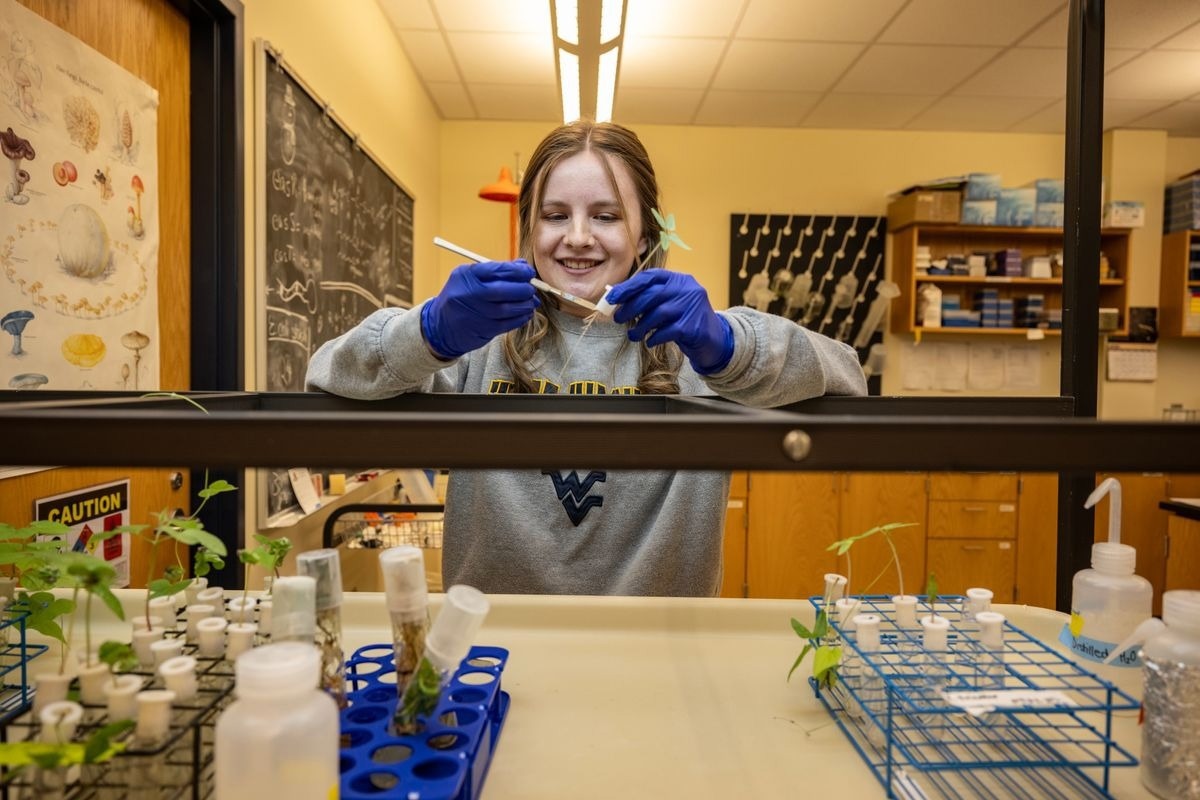Reviewed by Lexie CornerJun 3 2025
A microbiology student at West Virginia University has identified a fungus with properties similar to those of LSD, a semisynthetic drug used in the treatment of addiction, depression, and post-traumatic stress disorder. The discovery may have potential applications in pharmaceutical research.
 Corinne Hazel, a WVU environmental microbiology major from Delaware, Ohio, has discovered a new species of fungus that may treat a variety of medical conditions. Image Credit: West Virginia University/Brian Persinger
Corinne Hazel, a WVU environmental microbiology major from Delaware, Ohio, has discovered a new species of fungus that may treat a variety of medical conditions. Image Credit: West Virginia University/Brian Persinger
Corinne Hazel, an environmental microbiology student and Goldwater Scholar from Delaware, Ohio, identified Periglandula clandestina, a previously unclassified fungal species that grows on morning glory plants.
Hazel made the discovery while working in the lab of Daniel Panaccione, the Davis-Michael Professor of Plant and Soil Sciences at WVU’s Davis College of Agriculture and Natural Resources. She was studying how morning glory plants distribute defensive compounds called ergot alkaloids through their roots when she found signs of the fungus.
We had a ton of plants lying around, and they had these tiny little seed coats. We noticed a little bit of fuzz on the seed coat. That was our fungus.
Daniel Panaccione, Davis-Michael Professor, West Virginia University
The researchers prepared a DNA sample and submitted it for genome sequencing, which was supported by Hazel’s WVU Davis College Student Enhancement Grant. The sequencing confirmed the identification of a new species, and the sequence has been deposited in a genetic database under Hazel’s name.
Panaccione added, “Sequencing a genome is a significant thing. It is amazing for a student.”
Morning glory plants are known to coexist with fungi that produce the same ergot alkaloids that Swiss scientist Albert Hofmann modified during the development of LSD in the late 1930s.
Hofmann had hypothesized that a fungus associated with morning glories was responsible for producing alkaloids similar to those found in LSD. However, the specific species had not been identified until the discovery by Hazel and Panaccione. Their findings were published in Mycologia.
Panaccione added, “Morning glories contain high concentrations of similar lysergic acid derivatives that give them their psychedelic activities. This inspired Hofmann and others to investigate morning glories for the presence of a hidden fungus related to the ergot fungus that might be the source of these chemicals. They found very similar chemicals, but they could never find the fungus itself.”
Ergot alkaloids are only produced by fungi. In addition to morning glories, they are frequently observed growing on grains such as rye. They can be toxic to people and cattle and, when administered therapeutically, can have unintended consequences. Nonetheless, some doctors use them to treat migraines, dementia, uterine hemorrhage, and Parkinson's disease.
Periglandula clandestina is extremely effective in producing ergot alkaloids in huge numbers, which may play a role in future therapeutics. According to Panaccione, the finding of the fungus opens up a plethora of new study opportunities.
Panaccione added, “Many things are toxic. But if you administer them in the right dosage or modify them, they can be useful pharmaceuticals. By studying them, we may be able to figure out ways to bypass the side effects. These are big issues for medicine and agriculture.”
The researchers named the fungus Periglandula clandestina because it remained undetected by scientists for decades.
Panaccione stated, “I think that is the perfect name. And I love that we did this project together. Corinne has a ton of talent. It is about students recognizing the opportunities, seizing them, and having the skill and the brain power to bring this work to fruition.”
Hazel is now studying the best methods for cultivating the slow-growing fungus. She is also investigating whether other species of morning glories host unidentified fungal partners that produce ergot alkaloids.
Panaccione concluded, “I am lucky to have stumbled into this opportunity. People have been looking for this fungus for years, and one day, I look in the right place, and there it is. I am very proud of the work that I have done at WVU.”